Kilimanjaro Temperature
Understanding the Kilimanjaro Temperature variations is the compass guiding the Mount Kilimanjaro Climbing journey while also being a key factor towards a successful summit. From red-hot foothills to icy summits, the temperature is your constant companion.
Knowing when it's warm and when it's chilly, when to rest and when to push on, can mean the difference between triumph and challenge on this iconic peak. So, acknowledge the temperature, respect its changes, and let it be your ally on your Kilimanjaro Climbing quest.
Factors Influencing Kilimanjaro Temperature
The topic of Temperature in Kilimanjaro is as diverse as the landscapes that cover the mountain’s iconic slopes. Below, we’ll slowly decipher the complex web that shapes Kilimanjaro’s temperature, adding a touch of charm to the Climbing Kilimanjaro journey.
Altitude and Temperature Variation
During the ascent of a Kilimanjaro Trek, one of the most prominent things you'll notice is the dramatic temperature change. This change is closely linked to the altitude hikers gain with every step.
- Scientifically, this relationship is known as the "lapse rate."
- On average, for every 1,000 meters (or 3,280 feet) you climb, the temperature drops by roughly 6.5 degrees Celsius (11.7 degrees Fahrenheit).
Visualize This – You start the Mount Kilimanjaro Climb in the lush, humid foothills, where a light breeze might be all you need to stay comfortable. But as you ascend, the air pressure drops, and the atmosphere thins.
Consequently, the temperature takes a dip as well. By the time you reach the Kilimanjaro Summit, it's a whole different world—often below-freezing, even during the summer months. This temperature variation is part of what makes Kilimanjaro such a unique and challenging climb.
Seasonal Climate Patterns
The Temperature on Mount Kilimanjaro is characterized by two distinct rainy seasons and two dry seasons. The long rainy season, typically from March to May, and the short rainy season, from October to December, mark the cooler and wetter periods on the mountain.
- These are times when the weather can be unpredictable, and precipitation is no stranger.
- During the rainy seasons, Mt Kilimanjaro receives a generous dose of rain, adding another layer of complexity to its temperature profile.
As the rain pours down, it can affect temperature patterns and create slippery, muddy conditions for climbers. But it also contributes to the lush greenery and vibrant ecosystems that call this mountain home.
Influence of Kilimanjaro's Equatorial Location
Kilimanjaro's unique location near the equator further enhances its intriguing climate. Situated so close to this imaginary line that divides the Earth, Kilimanjaro basks in relatively consistent solar radiation throughout the year. It's like a never-ending summer, which is quite the contrast to its icy summit.
- But there's more to the equatorial story. Kilimanjaro's proximity to the Indian Ocean plays a central role in its climate.
- The Indian Ocean Dipole and the El Niño-Southern Oscillation (ENSO) are like conductors, arranging variations in temperature and rainfall patterns.
- These atmospheric phenomena can create shifts in air pressure, ultimately influencing the temperature and weather conditions on the mountain.
Additionally, each ecological zone is a unique world of its own, shaped by the equatorial climate. This diversity further adds to the variation of the Temperature on Kilimanjaro.
Average Temperature On Kilimanjaro
From the foothills of the mountain to its icy summit, Kilimanjaro presents a medley of temperature variations. We’ll go through each of the temperature zones of the mountain along with temperature ranges at different altitudes and daytime and nighttime temperatures in more detail below:
Average Temperature On Kilimanjaro
Temperature Zones on Kilimanjaro
As climbers ascend Kilimanjaro's slopes, they will notice the landscape transform, and with it, the temperature. This journey can be divided into distinct temperature zones, each categorized by its unique conditions. These zones are determined by altitude and vegetation and include:
Rainforest Zone (Approx. 800 to 2,800 meters or 2,600 to 9,200 feet)
Here, daytime temperatures typically range from a comfortable 10 to 25 degrees Celsius (50 to 77 degrees Fahrenheit), with cooler conditions at higher elevations. Nighttime can bring temperatures of around 5 to 10 degrees Celsius (41 to 50 degrees Fahrenheit).
Heath/Moorland Zone (Approx. 2,800 to 4,000 meters or 9,200 to 13,100 feet)
Daytime temperatures in this zone hover between 5 to 15 degrees Celsius (41 to 59 degrees Fahrenheit). Nighttime brings in cooler weather, with temperatures ranging from -5 to 5 degrees Celsius (23 to 41 degrees Fahrenheit).
Alpine Desert Zone (Approx. 4,000 to 5,000 meters or 13,100 to 16,400 feet)
Expect daytime temperatures here to be between -5 to 5 degrees Celsius (23 to 41 degrees Fahrenheit). Nighttime brings even chillier conditions, dipping to around -10 to -5 degrees Celsius (14 to 23 degrees Fahrenheit).
Summit Glaciers (Above 5,000 meters or 16,400 feet)
As you approach the summit, temperatures can vary greatly but generally range from -15 to -5 degrees Celsius (5 to 23 degrees Fahrenheit) during the day. The nights are even colder, with temperatures plummeting to as low as -20 to -10 degrees Celsius (-4 to 14 degrees Fahrenheit) or even colder.
Typical Temperature Ranges at Different Altitudes
The Mt Kilimanjaro Temperature is further characterized by variations based on altitude and the time of year. On average, for every 100 meters (328 feet) of elevation gain, you can expect a decrease of about 0.6 degrees Celsius (1 degree Fahrenheit).
Daytime and Nighttime Temperature Differences
On Kilimanjaro, the difference between daytime and nighttime temperatures is a noticeable feature at all altitudes.
The daytime and nighttime temperature difference can range from around 5 to 15 degrees Celsius (9 to 27 degrees Fahrenheit) or even more. It's a reminder of the ever-changing nature of Temperature on Kilimanjaro, making each day's journey a unique experience.
Temperature Variations Across Climbing Routes
Each Kilimanjaro Climbing Route offers its unique blend of temperature experiences – from the warm embrace of the lower slopes to the bone-chilling cold of the summit. Explore the nuances of these temperature shifts via the help of the following representation.
| CLIMBING ROUTE |
TEMPERATURE RANGE (Daytime) |
TEMPERATURE RANGE (Nighttime) |
| Marangu Route |
10°C to 20°C (50°F to 68°F) |
0°C to 5°C (32°F to 41°F) |
| Machame Route |
5°C to 15°C (41°F to 59°F) |
-5°C to 0°C (23°F to 32°F) |
| Rongai Route |
5°C to 15°C (41°F to 59°F) |
-5°C to 0°C (23°F to 32°F) |
| Lemosho Route |
5°C to 15°C (41°F to 59°F) |
-5°C to 0°C (23°F to 32°F) |
| Northern Circuit |
-5°C to 5°C (23°F to 41°F) |
-10°C to -5°C (14°F to 23°F) |
Gleaning from the above information will help climbers prepare for a climactic adventure up Kilimanjaro like no other.
Climate Change And Kilimanjaro Temperature
In the shadow of climate change, Kilimanjaro's icy crown is under threat. Explore the profound impact of shifting global climate patterns on this iconic mountain. Witness the transformation of its glaciers, the heartbeat of its unique ecosystem, and discover how the future of Kilimanjaro hangs in the balance.
Here's a table that provides key information on the impact of climate change on the Glaciers on Kilimanjaro:
| YEAR |
GLACIER EXTENT (KM²) |
CHANGE FROM PREVIOUS YEAR (KM²) |
| 2000 |
2.6 |
None |
| 2005 |
2.45 |
-0.15 |
| 2010 |
2.31 |
-0.14 |
| 2015 |
2.1 |
-0.21 |
| 2020 |
1.98 |
-0.12 |
| 2023 (Estimated) |
1.85 |
None |
As we come to terms with the realities of climate change, Kilimanjaro stands as both a guard and a symbol. Its shrinking glaciers serve as a blunt reminder of our planet's changing climate. It's a call to action, urging us to protect and preserve this natural wonder so that future generations can admire it too.
Kilimanjaro's Temperature is a dynamic force that shapes the mountain's unique ecosystems and presents climbers with a climatic adventure like no other.
Best Time To Climb Kilimanjaro
Best Time To Climb Kilimanjaro According To The Temperature
Kilimanjaro experiences distinct seasons, with January to March and June to October offering the most favourable temperature conditions. During these periods, the mountain enjoys drier and milder weather, ensuring a comfortable and enjoyable ascent for trekkers.
Here's a representation going over the best times for Climbing Kilimanjaro based on the temperature conditions:
| MONTH |
TEMPERATURE RANGE (°C) |
TEMPERATURE RANGE (°F) |
CLIMBING CONDITIONS |
| January-March |
5°C to 15°C |
41°F to 59°F |
Ideal for climbing, with warm days and cooler nights. |
| April-May |
3°C to 12°C |
37°F to 54°F |
Wet and muddy conditions due to the long rainy season. |
| June-October |
10°C to 20°C |
50°F to 68°F |
Excellent weather, dry and mild, making for a comfortable climb. |
| November-December |
5°C to 15°C |
41°F to 59°F |
Short rainy season with cooler temperatures, still suitable. |
Special Insight about the Sunrise – While choosing the Best Month to Climb Kilimanjaro is essential for comfortable trekking, there's a reward that awaits climbers! This is true regardless of the season. As you reach the summit, Uhuru Peak, at sunrise, you'll witness an amazing spectacle. The first light of day paints the sky in shades of orange and pink, casting a warm glow upon the glaciers and the surrounding landscape. It's a moment of pure magic, where the cold temperatures of the summit are forgotten in the face of nature's beauty.
Journeying Through Kilimanjaro’s Temperature Tale
In the end, as climbers set off on a challenging yet rewarding Mount Kilimanjaro Climbing adventure, the Kilimanjaro Temperature isn’t just a range of numerical figures! Rather it is a reliable companion. Thus, respect it, adapt to it, and let it be a part of the climb.
Explore Kilimanjaro Travel Guide
Find essential topics below to help you plan, prepare, and enjoy your Kilimanjaro travel experience fully.
Climb Kilimanjaro With Us
Get ready for a mountain adventure with real advice, smiling guides, and simple help that actually works. We’re with you from start to summit.
Frequently Asked Questions
The average Temperature on Top of Kilimanjaro typically ranges from -15 to -5 degrees Celsius (5 to 23 degrees Fahrenheit) during the day. Nighttime temperatures drop as low as -20 to -10 degrees Celsius (-4 to 14 degrees Fahrenheit) or even colder.
Temperature on Kilimanjaro changes with increasing altitude due to the decrease in air pressure and thinning of the atmosphere. On average, it drops by approximately 0.6 degrees Celsius (1 degree Fahrenheit) for every 100 meters (328 feet) of elevation gain.
In the rainforest zone of Kilimanjaro, typical temperature ranges are around 10 to 25 degrees Celsius (50 to 77 degrees Fahrenheit) during the day, with cooler temperatures at higher elevations.
Daytime Mount Kilimanjaro Temperature is generally warmer due to direct sunlight, while nighttime temperatures drop rapidly due to the thinning atmosphere. The temperature difference between daytime and nighttime can range from around 5 to 15 degrees Celsius (9 to 27 degrees Fahrenheit) or more, depending on the altitude and season.
In the heath/moorland zone, daytime Temperatures on Mount Kilimanjaro range from about 5 to 15 degrees Celsius (41 to 59 degrees Fahrenheit). Nighttime temperatures can drop to around -5 to 5 degrees Celsius (23 to 41 degrees Fahrenheit).
In the alpine desert zone of Kilimanjaro, daytime temperatures range from -5 to 5 degrees Celsius (23 to 41 degrees Fahrenheit). Nighttime temperatures can drop to around -10 to -5 degrees Celsius (14 to 23 degrees Fahrenheit).
Kilimanjaro's dry seasons, typically from January to March and June to October, offer daytime temperatures ranging from 5°C to 20°C (41°F to 68°F), providing excellent climbing conditions.
Temperature On Kilimanjaro has been affected by climate change, leading to the shrinking of its glaciers.
Temperature variations across different climbing routes on Kilimanjaro can vary based on the route's altitude and geographical characteristics. For detailed information on temperature variations across routes, refer to route-specific resources or guides.
Kilimanjaro's equatorial location contributes to its relatively consistent solar radiation throughout the year. However, the proximity to the Indian Ocean and the influence of large-scale climate phenomena, such as the Indian Ocean Dipole and El Niño-Southern Oscillation (ENSO), can cause shifts in atmospheric pressure.
Simbo Natai, founder of African Scenic Safaris, crafts sustainable, meaningful Tanzanian journeys rooted in his deep local knowledge and passion.
Director









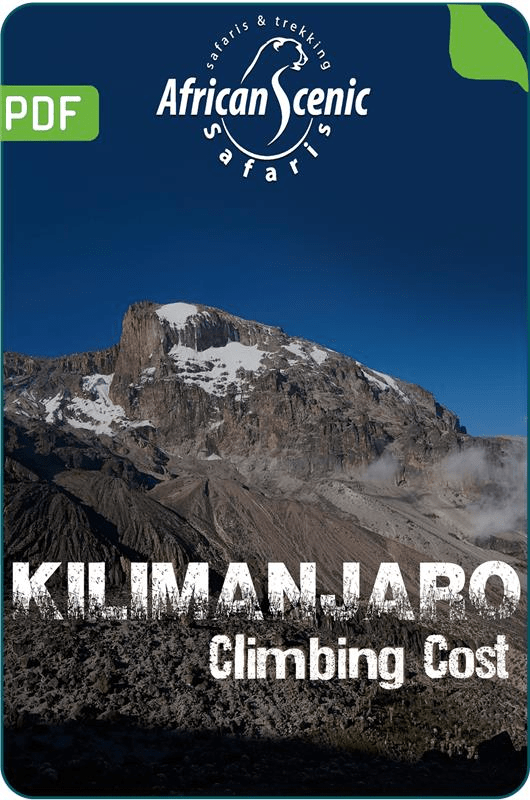





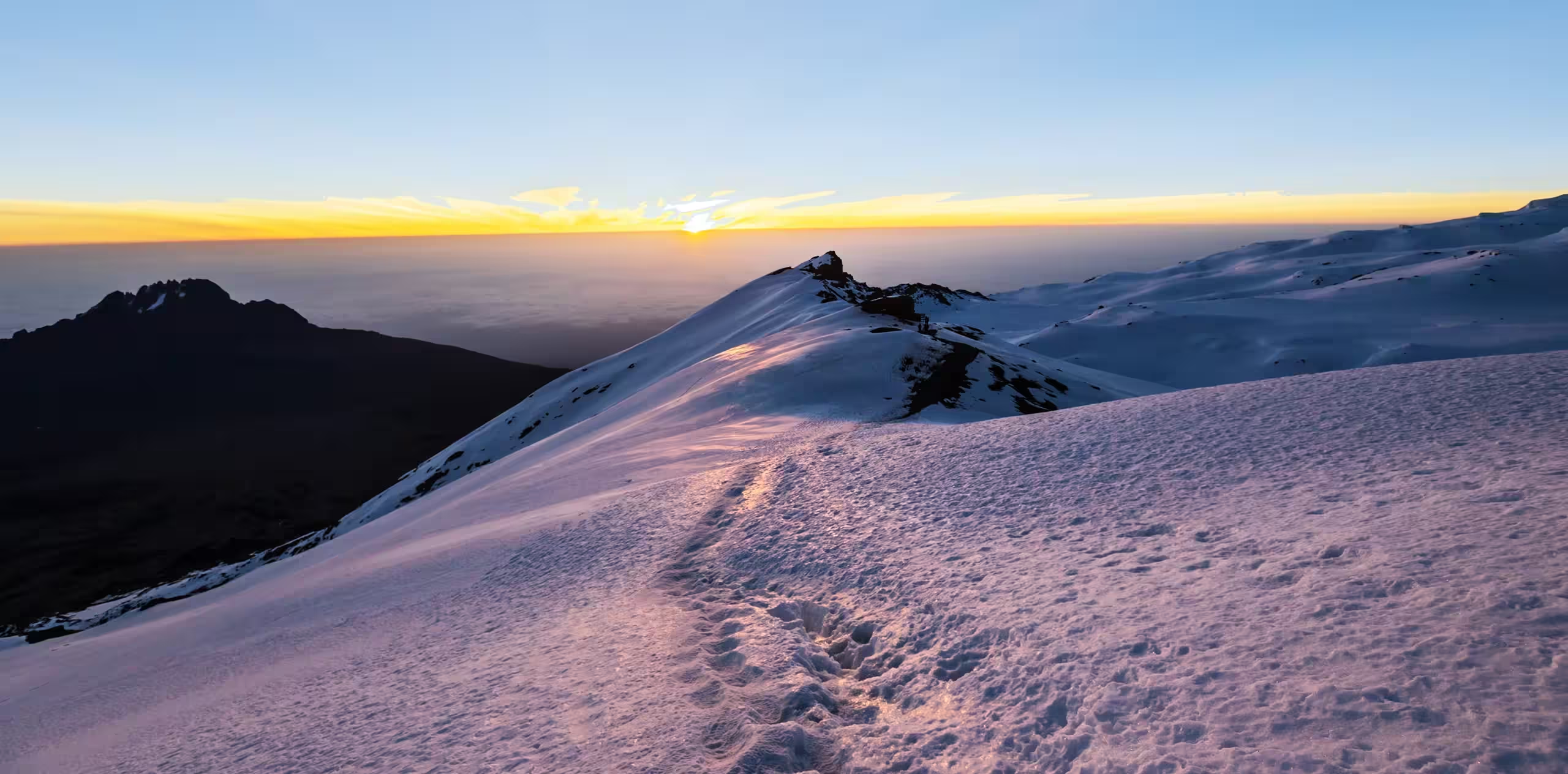

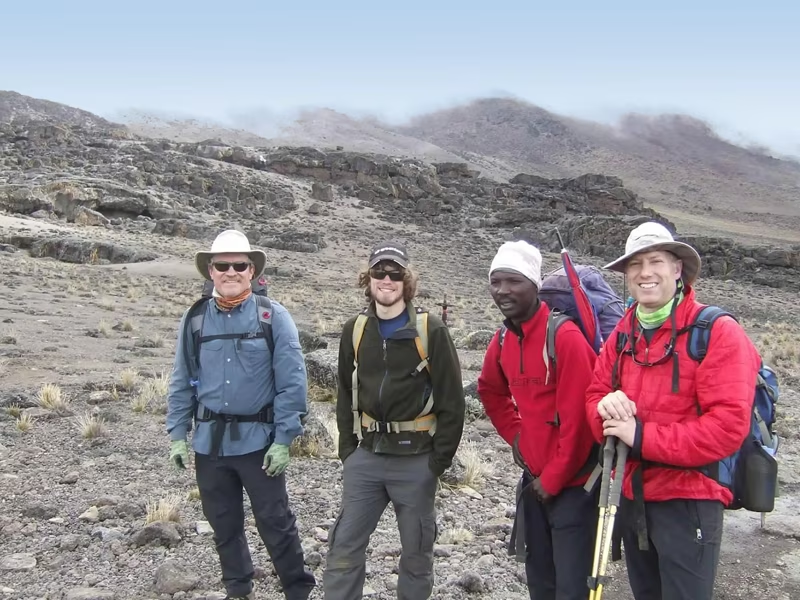
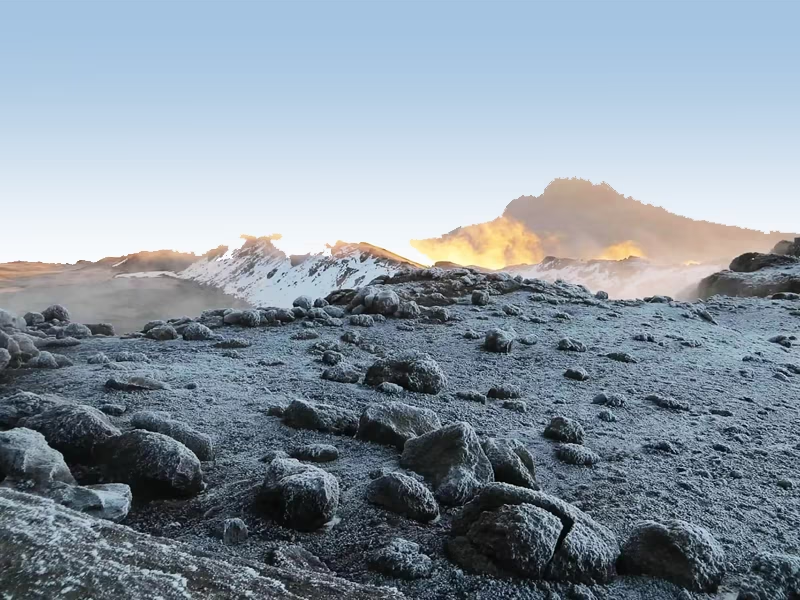


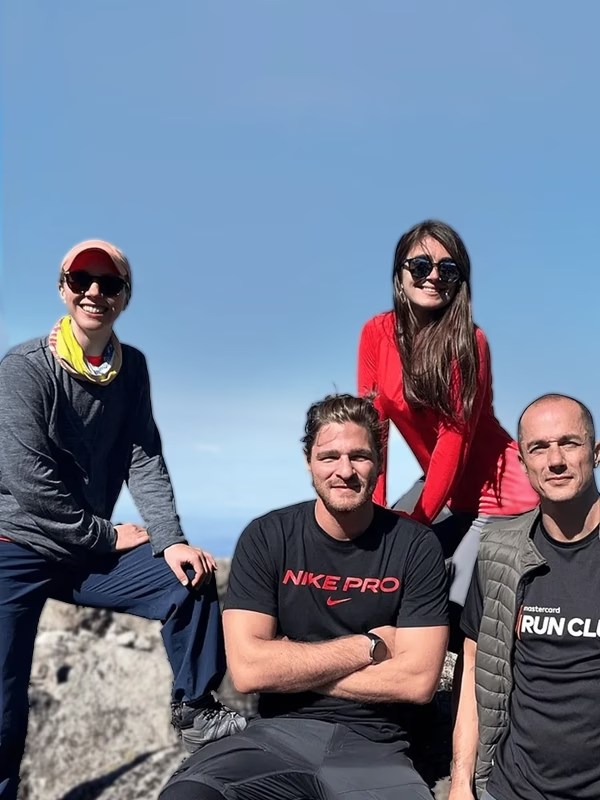





 African Scenic Safaris #1 on TripAdvisor
African Scenic Safaris #1 on TripAdvisor 




